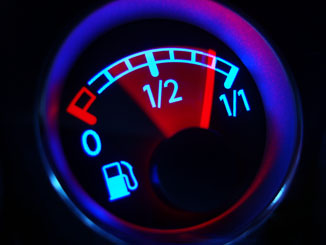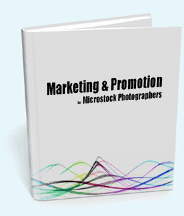Now this could get confusing - with all the talk of micro and macrostock agencies in recent months. I'm talking macro as in taking close up photos here, ones that are useful and hopefully make good microstock sales, so let's leave those pretty flower heads well alone...
Use a Tripod - You already knew that one right? Exposures are long as you need to stop down more (not all the way) to get images sharp when using macro lenses, otherwise the depth of field (DOF) will be unreasonably narrow. Do some test shots with graticule or failing that some text on your computer screen to find which is the sharpest aperture on your lens and camera. If you stop all the way down to get everything in focus then you run the risk of having images rejected for 'being out of focus' due to overall softness caused by the narrow aperture.

Textures - animal skins, flooring, brushed metal, brick, natural details all make good subjects. From experience I have found this type of image either sells well or not at all, but considering the simplicity of taking such images it's worth taking them. Coming up with 10 different keywords for such an image can be a bit of a challenge! Often the image is sold by how it looks in the thumbnail when viewed online - making sales this type of subject a little hit and miss.
Avoid Abstractions, It's fun and creative (so it's a good thing if you are getting fed up while out shooting and need to keep your energy going), but avoid abstracting a subject so that it's hard to tell what it is. It will probably not sell all that well as microstock. It is best to look for details but keep the whole image in context.
Story Telling, just because it's a macro image doesn't mean that it can't contain a metaphor or tell some sort of story such as the fuel gauge image below.

Food - It's very trendy these days to shoot food with a very narrow DOF, but I'd also advise taking an image with the whole subject in focus at the same time. Some agencies, and some designers will want different things, look after both tastes, you can shoot, keyword and upload at the same time.
Focus - Can be most difficult on macro images, even with a quality lens and aperture shut tight, all of the image may not be in sharp focus. At narrowest most macro lenses will create all sorts of unusual bokeh patterns and distortions, not to mention creating an image that is soft overall. Merging two images taken at a sharper aperture with different focus points might work well for landscapes, but when you focus a macro lens they often change in lens angle, while tiny, can change the look of the two images a huge amount making merging them difficult or impossible. Sometimes you just have to recompose so that the subject is more square-on or the background is different.
Background - if you can't make it cut out of white then at least keep it simple and well lit, a graduated backdrop or light fall off can often 'make an image' out of something that was dull when lit with a flat light. You can try to create a story with a background, such as out of focus people, beach, trees etc., if you do, work carefully as this will make it a lot harder to get attractive results out of the composition. As an example if I were taking an image such as a mobile phone or business diary with a city street and business people in the back I'd be looking at taking dozens and dozens of shots. Even then perhaps not finding one I liked without some serious Photoshop work, such images can easily be full of distracting elements such as car headlights, shadows, reflections and hotspots.

Lighting - Most of the macro images I take as stock images are done inside, 'table top', where I have full control, if you don't, and have to shoot outside, then choose either an overcast day (and longer exposures) or a bright sunny day and use a translucent sheet (reflector without the cover if you have one) to diffuse the light. You might then be able to shoot something hand held or moving. An off camera flash (wireless is fine, but your existing flashgun with a hotshoe extension wire is all you need), bouncing the flash or if you do a lot of this then buying a ring flash will also help considerably.
In many cases macro-photography is one type of image that 'joe the designer' cannot just go out and take with his point and shoot camera. The more complex or difficult to set up an image is the higher the price you can charge and perhaps the more microstock sales it is likely to make.



It's quiet in here! Add new comment